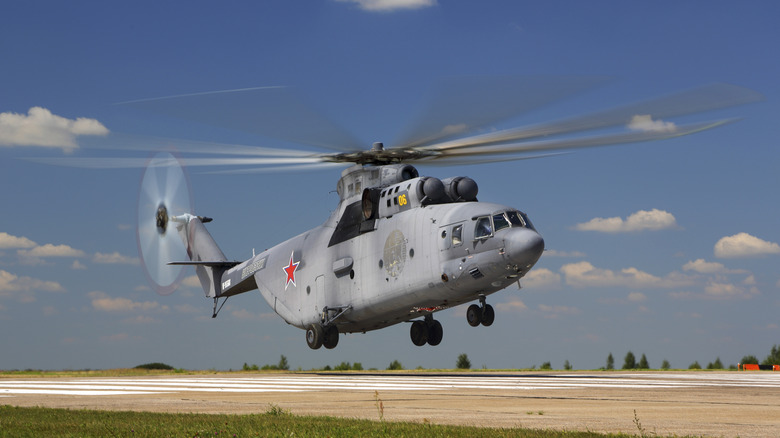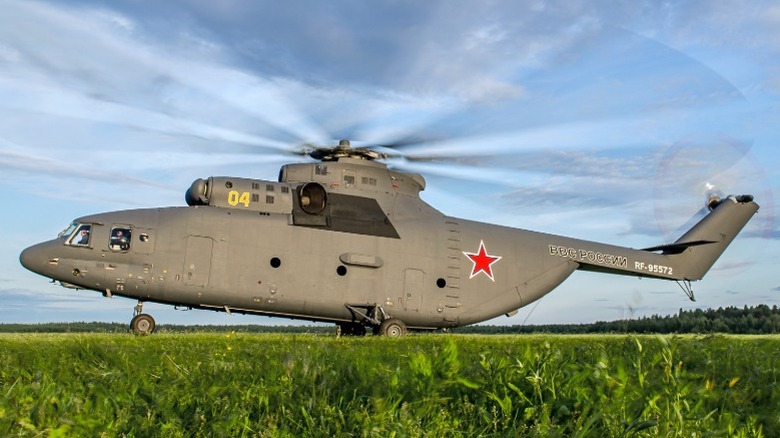What Is The Largest Military Helicopter In The World And How Many Soldiers Can It Carry?
World War II saw the development of helicopters, but they truly came into focus during the Korean War. That conflict saw the widespread use of helicopters for medevac operations and more. The Vietnam War only expanded this trend, and other nations around the world have also poured a great deal of resources into creating effective military helicopters. Some of the choppers used around the world are quite small, but there are also some huge ones.
The United States' largest helicopter, which can carry up to 32 passengers, is the CH-53K King Stallion. That's a big bird, and the helicopter has proven itself in various military operations since its introduction. While massive, the King Stallion isn't the largest helicopter in the world — it's merely the largest the U.S. has in its inventory. The Soviet Union significantly one-upped the United States with the largest helicopter ever produced, the Mil Mi-26. It is the largest helicopter to go into production anywhere in the world, with more than 300 built as of 2016.
In terms of carrying capacity, the Mi-26 has no equal. While the King Stallion can carry an impressive 32 passengers, it pales in comparison to its Russian counterpart. The Mi-26 can carry up to 90 light combat troops alongside its crew of four personnel. Additionally, instead of carrying soldiers or up to 60 medical litters and patients, the Mi-26 can carry two armored military vehicles in its large cargo hold. These military helicopters are also used by civilians, but for the most part, they transport more than a platoon's worth of combat power in a single mission.
All about the Mil Mi-26
The Soviets built another helicopter, the Mil V-12, which was the largest ever built. However, it was just a prototype, which means that the Mi-26 reigns supreme. Since its introduction, the Mi-26 has undergone several upgrades, resulting in the Mi-26T2V, which is the current model in production. The aircraft features eight main rotor blades and a five-bladed tail rotor. The cargo compartment measures 39.37 feet long, 10.82 feet wide, and 10.5 feet high. This allows for the loading of up to two cargo vehicles weighing around 2,205 pounds each.
The chopper is powered by PD-8V turboshaft engines, which replaced the previously used Lotarev D-136 engines. The performance metrics for the new engines aren't publicly available, but the previous engines were able to move the helicopter at up to 183.3 mph with a range of 1,196 miles and an operational ceiling of 15,092 feet. Unloaded, the Mi-26 weighs 62,170 pounds, but this balloons to a whopping 123,459 pounds when loaded to its maximum capacity.
The Mi-26 is more than the largest helicopter ever put into operation, as it's also an effective vehicle in and out of the Russian military. While not one of the most iconic military helicopters in history, it has a proven track record in numerous campaigns since its introduction in 1983. That said, it's not immune to accidents and hostile fire: In 2002, 74 Russian soldiers were killed while flying in an Mi-26 in Chechnya, earning the Mi-26 the unenviable distinction of being involved in the deadliest helicopter loss in history.

